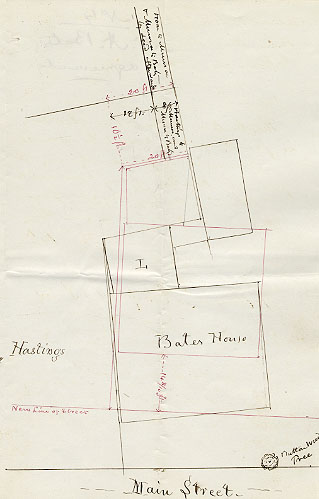
9. The Widening of Main Street
At town meeting in November, 1871, a committee of three was appointed to consider William Munroe's proposal to widen Main Street. The members of this committee were, not coincidentally, Munroe supporters Frederic Hudson, Reuben N. Rice, and Henry F. Smith. Munroe intended to widen Main Street to 66 feet for about 350 feet on the south side (from the house of Jonas Hastings to that of Asa Collier).
William Munroe estimated that it would cost $5,000 to widen Main Street. The Committee on the Widening of Main Street petitioned the Middlesex County Highway Commissioners to help defray the cost. After reviewing the site and the facts of the case, the county agreed to provide $2,000 (two-fifths) of the total. Munroe pledged to raise $1,000 from private contributions, which he accomplished. (Contributors included Munroe himself, Reuben N. Rice, George Merrick Brooks, Henry F. Smith, Edward Carver Damon, and Frederic Hudson, all of whom were integrally connected with the early management of the Concord Free Public Library.) The remaining $2,000 was appropriated at town meeting on March 25, 1872.
The widening of Main Street required not only purchasing property from homeowners on the south side of the street (Jonas Hastings, Adolphus Bates, and George M. Barrett), but also moving their homes further back on their parcels, removing trees, and setting fences back.
On October 14, 1871, property owner Adolphus Bates signed the document of consent necessary for the Town of Concord and the Middlesex County Highway Commissioners to take as much of his land as was necessary to widen Main Street to sixty-six feet. His manuscript document of consent (from the records of the Committee on the Widening of Main Street) includes the plan of proposed road alterations (shown here).
